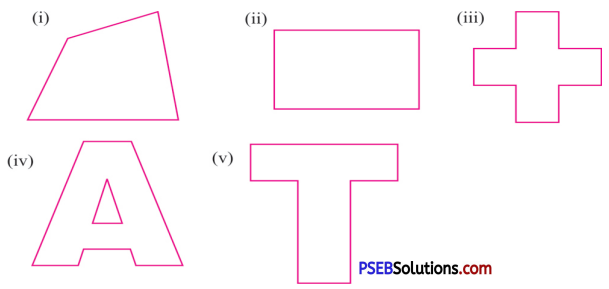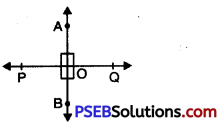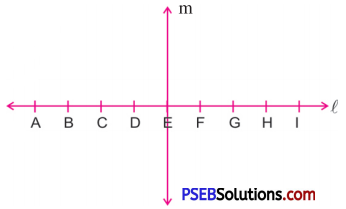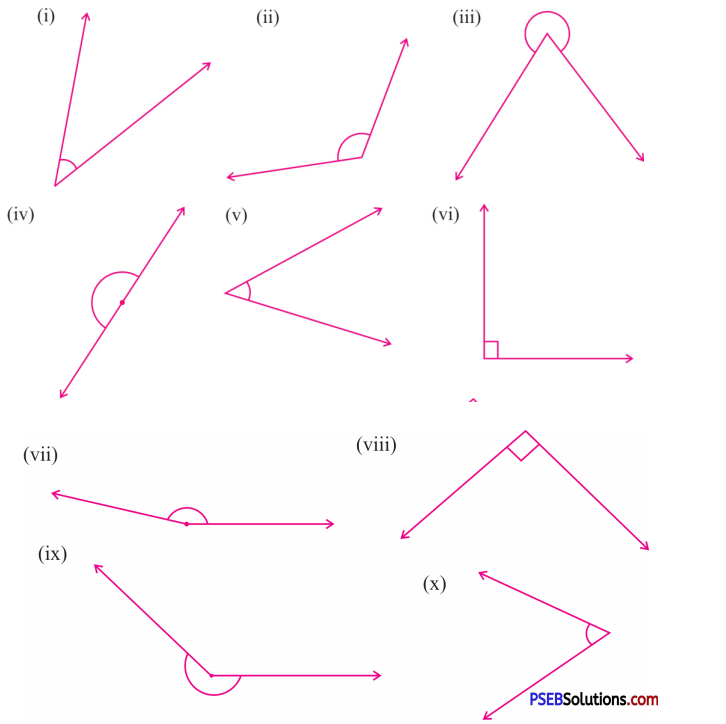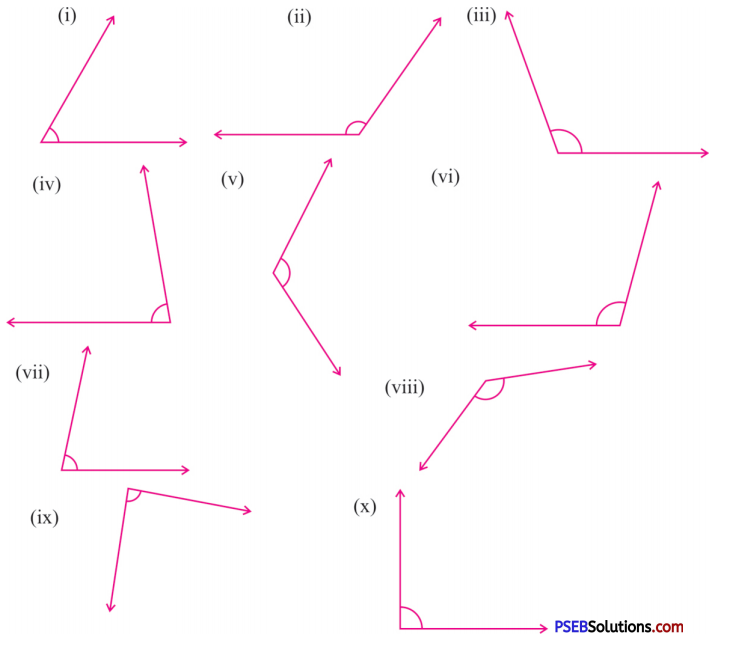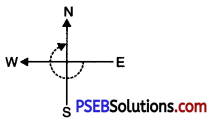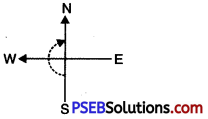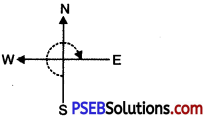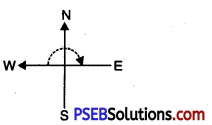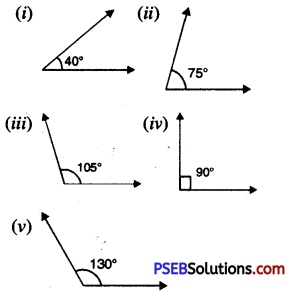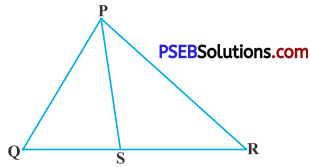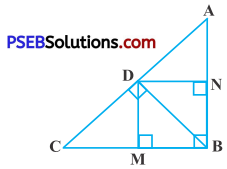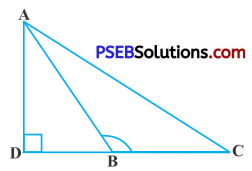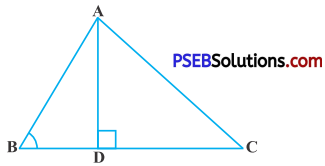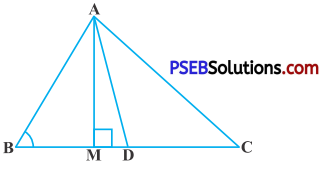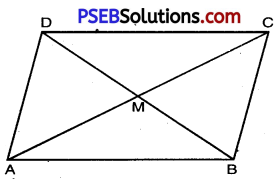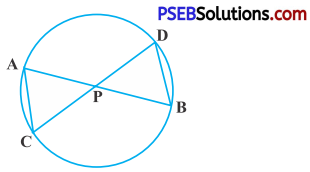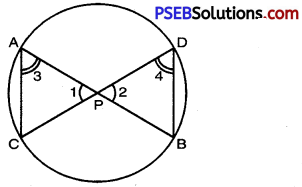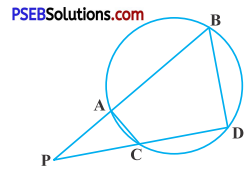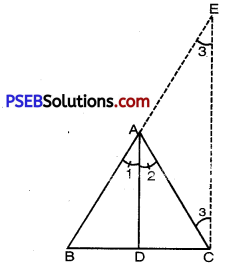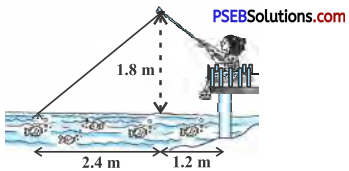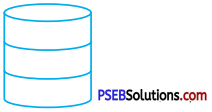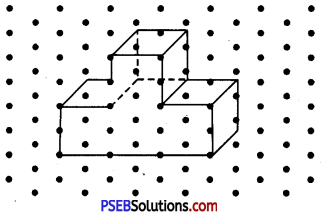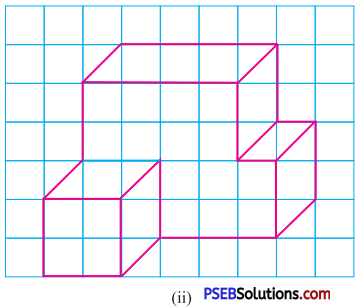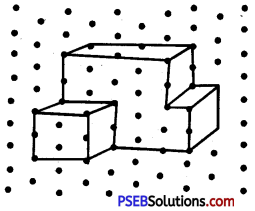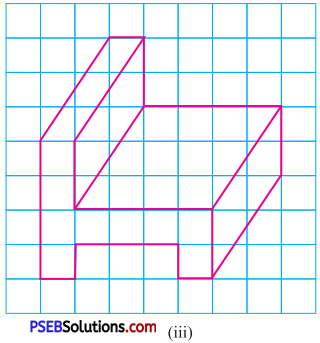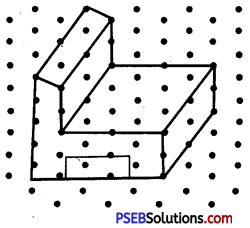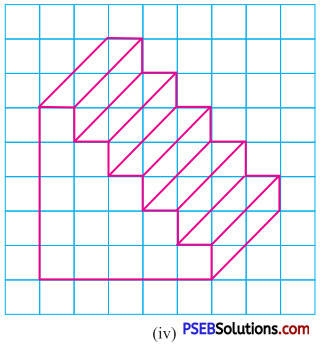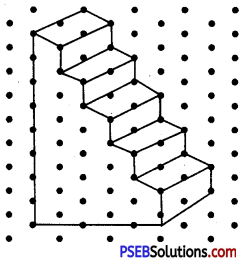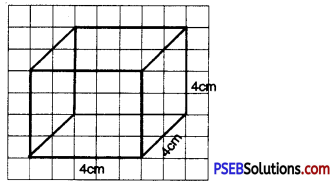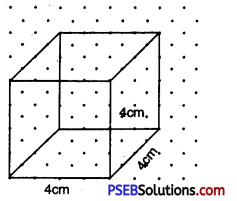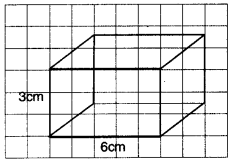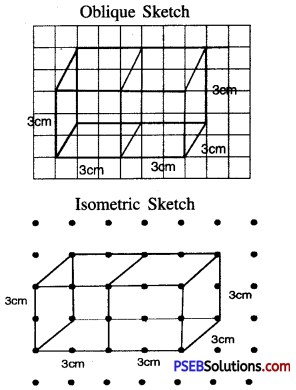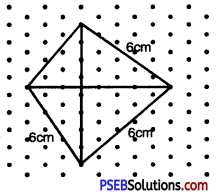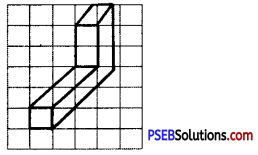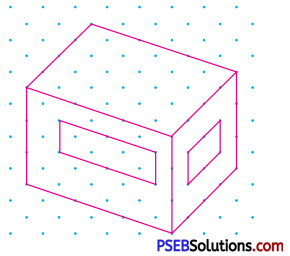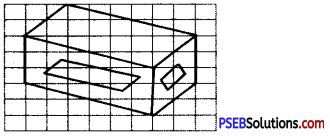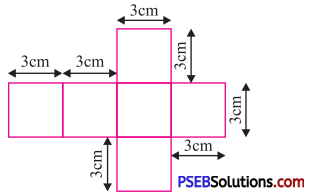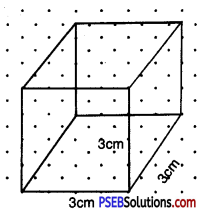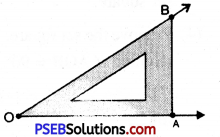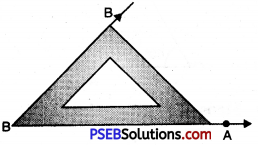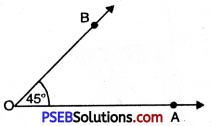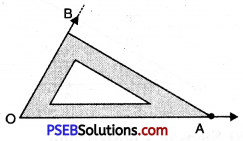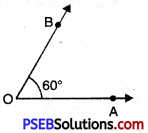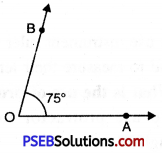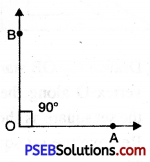Punjab State Board PSEB 9th Class Maths Book Solutions Chapter 13 Surface Areas and Volumes Ex 13.4 Textbook Exercise Questions and Answers.
PSEB Solutions for Class 9 Maths Chapter 13 Surface Areas and Volumes Ex 13.4
Note: Assume π = \(\frac{22}{7}\), unless stated otherwise.
Question 1.
Find the surface area of a sphere of radius:
(i) 10.5 cm
Answer:
For the given sphere,
radius r = 10.5 cm = \(\frac{21}{2}\) cm.
Surface area of a sphere
= 4πr2
= 4 × \(\frac{22}{7}\) × \(\frac{21}{2}\) × \(\frac{21}{2}\) cm2 = 1386 cm2
![]()
(ii) 5.6 cm
Answer:
For the given sphere, radius r = 5.6cm.
Surface area of a sphere
= 4πr2
= 4 × \(\frac{22}{7}\) × 5.6 × 5.6 cm2
= 394.24 cm2
(iii) 14 cm
Answer:
For the given sphere, radius r= 14 cm.
Surface area of a sphere
= 4πr2
= 4 × \(\frac{22}{7}\) × 14 × 14 cm2
= 2464 cm2
Question 2.
Find the surface area of a sphere of diameter:
(i) 14cm
Answer:
For the given sphere, diameter d = 14 cm.
Then, radius r = \(\frac{\text { diameter }}{2}\)
= \(\frac{14}{2}\) cm = 7 cm
Surface area of a sphere
= 4πr2
= 4 × \(\frac{22}{7}\) × 7 × 7 cm2
= 616 cm2
![]()
(ii) 21cm
Answer:
For the given sphere, diameter d = 21 cm.
Then, radius r = \(\frac{\text { diameter }}{2}\)
= \(\frac{21}{2}\) cm
Surface area of a sphere
= 4πr2
= 4 × \(\frac{22}{7}\) × \(\frac{21}{2}\) × \(\frac{21}{2}\) cm2
= 1386 cm2
(iii) 3.5 m
Answer:
For the given sphere, diameter d = 3.5 cm.
Then, radius r = \(\frac{\text { diameter }}{2}\)
= \(\frac{3.5}{2}\) m
= \(\frac{35}{20}\) m
Surface area of a sphere
= 4πr2
= 4 × \(\frac{22}{7}\) × \(\frac{35}{20}\) × \(\frac{35}{20}\) m2
= 38.5 m2
Note: We can also use the formula “Surface area of a sphere = πd2” as
4πr2 = π × 4r2 = π × (2r)2 = πd2, where r and d are radius and diameter of the sphere respectively.
Question 3.
Find the total surface area of a hemisphere of radius 10 cm. (Use π =3.14)
Answer:
For the given hemisphere, radius r = 10 cm.
Total surface area of a hemisphere
= 3πr2
= 3 × 3.14 × 10 × 10 cm2
= 942 cm2
![]()
Question 4.
The radius of a spherical balloon increases from 7 cm to 14 cm as air is being pumped into it. Find the ratio of surface areas of the balloon in the two cases.
Answer:
For the first case, radius r1 of the spherical balloon is 7 cm.
Surface area of the spherical balloon in the
first case = 4πr12
= 4 × \(\frac{22}{7}\) × 7 × 7cm2
For the second case, radius r2 of the spherical balloon is 14 cm.
Surface area of the spherical balloon in the second case = 4πr22
Then, the required ratio of surface areas in two cases
= \(\frac{4 \times \frac{22}{7} \times 7 \times 7}{4 \times \frac{22}{7} \times 14 \times 14}\)
= \(\frac{1}{4}\) = 1 : 4
Thus, the required ratio is 1 : 4.
Note: Here, the ratio of radii = 7 : 14 = 1 : 2
Hence, the ratio of surface areas = \(\left(\frac{1}{2}\right)^{2}\) = \(\frac{1}{4}\) = 1 : 4, because in the formula of surface area of sphere, the degree of r is 2.
![]()
Question 5.
A hemispherical bowl made of brass has inner diameter 10.5 cm. Find the cost of tin-plating it on the inside at the rate of ₹ 16 per 100 cm2.
For the given hemispherical bowl, diameter = 10.5 cm.
Then, the radius r of the bowl = \(\frac{\text { diameter }}{2}\)
= \(\frac{10.5}{2}\) cm
= \(\frac{\frac{21}{2}}{2}\) cm
= \(\frac{21}{4}\) cm
Inner curved surface area of the hemispherical bowl
= 2 πr2
= 2 × \(\frac{22}{7}\) × \(\frac{21}{4}\) × \(\frac{21}{4}\) cm2
= \(\) cm2
= 173.25 cm2
Cost of tin-plating 100 cm2 region = ₹ 16
∴ Cost of tin-plating 173.25 cm2 region
= ₹ \(\left(\frac{16 \times 173.25}{100}\right)\)
= ₹ 27.72
Thus, the cost of tin-plating on the inner surface of the bowl is ₹ 27.72.
![]()
Question 6.
Find the radius of a sphere whose surface area is 154 cm2.
Answer:
For the given sphere, surface area = 154 cm2.
Surface area of a sphere = 4 πr2
∴ 154 cm2 = 4 × \(\frac{22}{7}\) × r2 cm2
∴ r2 = \(\frac{154 \times 7}{4 \times 22}\) cm2
∴ r2 = \(\frac{49}{4}\) cm2
∴ r = \(\frac{7}{2}\) cm
∴ r = 3.5 cm
Thus, the radius of the given sphere is 3.5 cm.
Question 7.
The diameter of the moon is approximately one fourth of the diameter of the earth. Find the ratio of their surface areas.
Answer:
Suppose, the diameter of the moon = d1
The diameter of the earth = 4 × d1 = 4d1
Then, the radius of the moon r1 = \(\frac{d_{1}}{2}\) and
the radius of the earth r2 = \(\frac{4 d_{1}}{2}\) = 2d1.
Now, \(\frac{\text { The surface area of the moon }}{\text { The surface area of the earth }}\) = \(\frac{4 \pi r_{1}^{2}}{4 \pi r_{2}^{2}}\)
= \(\frac{r_{1}^{2}}{r_{2}^{2}}\)
= \(\frac{\left(\frac{d_{1}}{2}\right)^{2}}{\left(2 d_{1}\right)^{2}}\)
= \(\frac{d_{1}^{2}}{4} \times \frac{1}{4 d_{1}^{2}}\)
= \(\frac{1}{16}\)
= 1 : 16
Thus, the ratio of the surface area of the moon and the surface area of the earth is 1 : 16.
![]()
Question 8.
A hemispherical bowl is made of steel, 0.25 cm thick. The inner radius of the bowl is 5 cm. Find the outer curved surface area of the bowl.
Answer:
For the given hemispherical bowl, the inner radius is 5 cm and the thickness of steel is 0.25 cm.
∴ Outer radius r of the given hemispherical bowl = 5 + 0.25 cm = 5.25 cm.
Curved surface area of a hemisphere
= 2πr2
= 2 × \(\frac{22}{7}\) × 5.25 × 5.25 cm2
= 2 × \(\frac{22}{7}\) × \(\frac{525}{100}\) × \(\frac{525}{100}\) cm2
= \(\frac{693}{4}\) cm2
= 173.25 cm2
Thus, the outer curved surface area of the given hemispherical bowl is 173.25 cm2.
![]()
Question 9.
A right circular cylinder just encloses a sphere of radius r (see the given figure). Find :
(i) surface area of the sphere,
(ii) curved surface area of the cylinder,
(iii) ratio of the areas obtained in (i) and (ii).
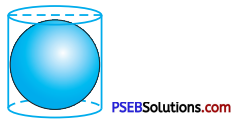
Answer:
Here,
radius of the cylinder = radius of the sphere = r and height of the cylinder h
= 2 × radius of the sphere = 2r
(i) Surface area of the sphere = 4πr2
(ii) Curved surface area of the cylinder
= 2 πrh
= 2 × 1 × r × 2r
= 4 πr2
(iii) Ratio of areas obtained in ( i ) and (ii)
= \(\frac{4 \pi r^{2}}{4 \pi r^{2}}\)
= \(\frac{1}{1}\)
= 1 : 1

